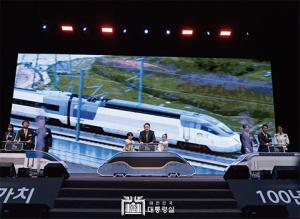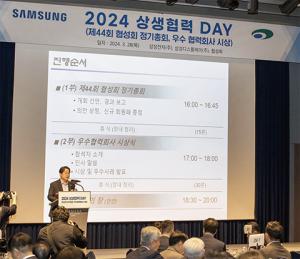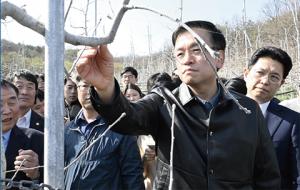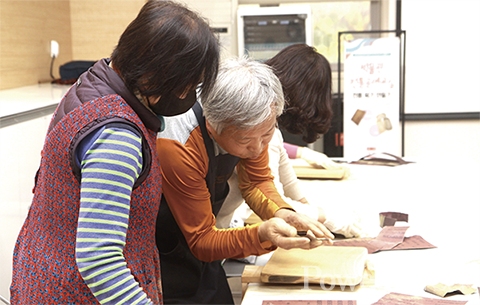 |
||
One of the things that always appeared in royal events, large and small ancestral rites, and wedding ceremonies was traditional wooden tools. After the Iron Age, wooden vessels, along with various earthenware vessels, were widely used as household vessels. Since the Joseon Dynasty, wooden vessels have maintained their function as ancestral rites for the royal family, temples, and ordinary households. However, metal, glass, and plastic appeared in large quantities, replacing wooden utensils. Kim Yong-oh, the representative of Goryeo Crafts and a third-generation successor to traditional wooden toolmaking, has emphasized that we should not simply blame the passage of time. In other words, it is important to diligently research and develop a variety of household wooden utensils, such as plates and traditional tea sets with new designs that suit the lifestyles and tastes of modern people, and develop a new concept of wooden utensil products that take advantage of the nature-friendliness and eco-friendliness of wooden utensils. Perhaps it was thought to be part of this process. In that sense, the traditional wood-making program, a museum traditional craft class with the 24th Daejeon Intangible Cultural Heritage No. 24 wooden craftsman, introduced by the Gongju National Museum in the second half of this year, was held in the seminar room of the Gongju National Museum from last October to mid-November.
 |
Woodenware, in a broad sense, includes both kitchen utensils and utensils used for eating. Hard trees such as alder, ash, birch, and ginkgo are mainly used for household wooden tools. Looking at the manufacturing process, after cutting the tree and roughly determining the structure, it is dried in the shade for about 40 days so that there are no cracks, and it takes the shape of a bowl. After completing this process, lacquering is repeated, and drying carefully for about ten days, the wooden utensil for everyday life finally shed light. The two-month traditional woodworking class consisted of two parts: making a lathe (shaping the lathe, adjusting the bottom of the lathe with a chisel, sanding, and painting) and making a solid wood cutting board (sanding, painting, and finishing a solid oak cutting board). Despite the flood of Chinese products, there is hope and comfort in seeing the students learning and making valuable household furniture that is appreciated by modern people who value their country’s traditions and seek well-being.
 |
Meaningful exhibition at the Gongju National Museum
The National Gongju Museum held a special exhibition, ‘The Funeral of King Muryeong of Baekje 1,500 Years Ago’, to commemorate the 1,500th anniversary of King Muryeong’s death, until the 12th of this month. The exhibition showcased 697 objects from 126 collections related to the funerary culture of the Baekje royal family, including cemetery stones and wooden coffins. It was impressive that I was able to understand King Muryeong’s funeral and Baekje people’s view of life and death by experiencing ‘more diverse funeral rite stories’ that broadly looked at the traditions and inheritance of Baekje funeral culture revealed through the latest research. I don’t know if it’s a strange coincidence, but I found it fascinating that the program of CEO Kim Yong-oh, who has been introducing lacquered urns for many years and suggesting a new alternative to the underdeveloped funeral environment, was held in one space.
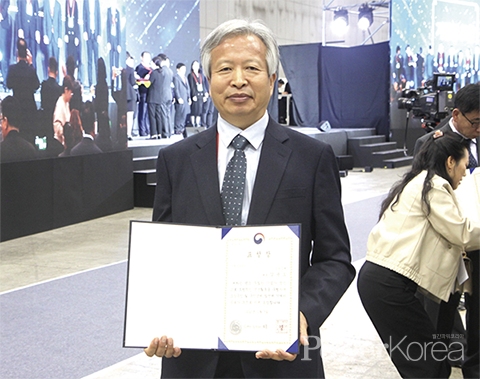 |
| ▲ Goryeo Crafts / CEO Kim Yong-oh |
Proud to keep the soul of our tradition alive and well
While the ‘2023 Korea Small Business Convention’ was held at KINTEX in Ilsan last month, CEO Kim Yong-oh was the only person in the Daejeon area to receive an exemplary small business commendation. The event was held for the 18th time this year to raise social and economic awareness of small businesses and to promote communication and harmony among small businesses, and various programs were held under the slogan ‘Small Businesses in the People, Economic Players in Korea’. President Yoon Seok-yeol, who gave an encouraging speech on this day, said, “To ease the financial burden of small business owners, we are preparing special support measures to reflect 4 trillion won in low-interest loan funds in next year’s budget and convert them into low-interest loans. We will be a warm hearted government that extends a helping hand to small business owners.” Kim Yong-oh, CEO of Goryeo Crafts, was recognized for his contribution to promoting the importance of Korean traditions to countries around the world through various exhibition experiences such as art exhibitions, talent donations, and volunteerism by applying traditional techniques.
지윤석 기자 jsong_ps13@naver.com

